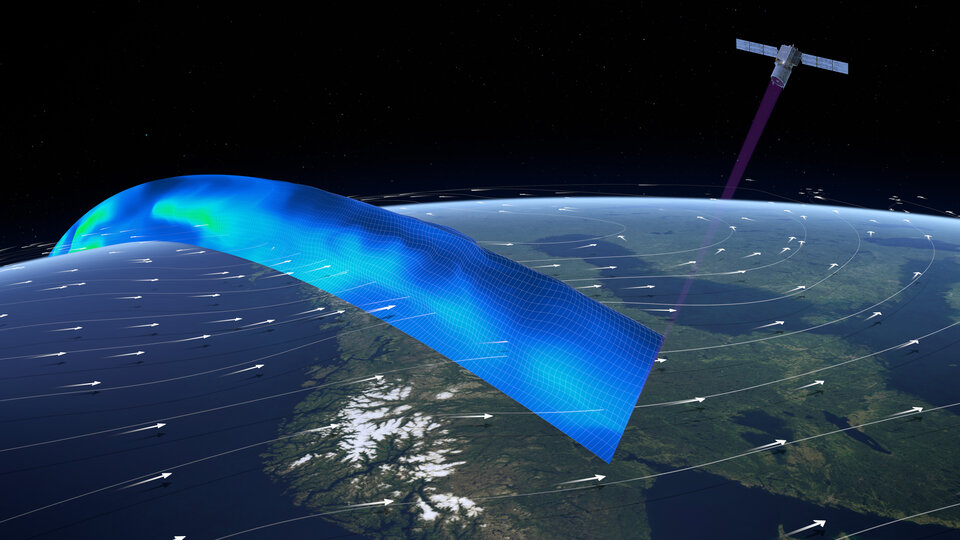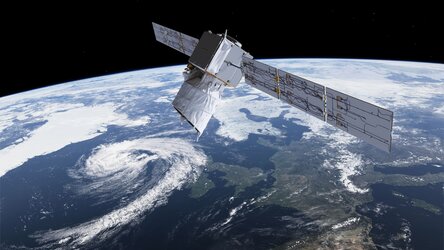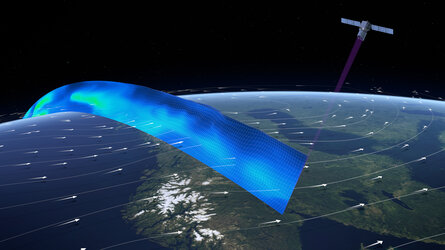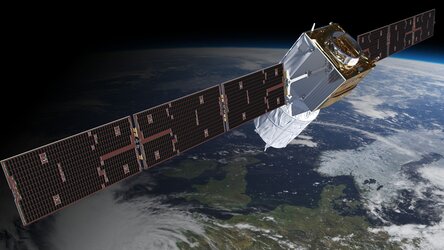Wind satellite heads for final testing
The road to realising ESA’s Aeolus mission may have been long and bumpy, but developing novel space technology is, by its very nature, challenging. With the satellite now equipped with its revolutionary instrument, the path ahead is much smoother as it heads to France to begin the last round of tests before being shipped to the launch site at the end of the year.
Aeolus carries one of the most sophisticated instruments ever to be put into orbit: Aladin, with two powerful lasers, a large telescope and very sensitive receivers.
It shoots pulses of ultraviolet light down into the atmosphere to profile the world’s winds.
This is a completely new approach to measuring the wind from space, which usually involves tracking cloud movement, measuring the roughness of the sea surface or inferring wind from temperature readings.

Aeolus has been built mainly to advance our understanding of Earth. These vertical slices through the atmosphere, along with information on aerosols and clouds, will advance our knowledge of atmospheric dynamics and contribute to climate research.
However, Aeolus also has a very important practical role to play because its measurements will be delivered rapidly, improving weather forecasts.
After its long development, Aladin was finally ready to join the satellite at Airbus Defence and Space in Stevenage in the UK in August last year.

ESA’s Aeolus project manager, Anders Elfving, said, “Over the last months, the UK team with support of their colleagues from Toulouse in France have worked tirelessly to integrate Aladin into the satellite, to check that all is aligned and that the complete satellite is working flawlessly.”
With the satellite now complete, it is time move it to Toulouse where it will be tested to make sure that it can withstand the vibration and noise of liftoff.
“This next round of tests is very important and I know the team is raring to get the opportunity to show that their proudly built satellite can withstand the tough ride on the launcher,” added Anders.
After this, Aeolus will go to Liege in Belgium to be checked in a thermal–vacuum chamber.

Anders said, “We still have some critical steps ahead. We need the ultimate proof that the laser and the complex optical system performs well with the satellite thermal radiators and in vacuum conditions, but I am confident that the satellite, operation and launch teams will deliver as planned.”
Once all this is done, towards the end of the year, it will be shipped across the Atlantic to Europe’s Spaceport in French Guiana for launch on a Vega rocket.















 Germany
Germany
 Austria
Austria
 Belgium
Belgium
 Denmark
Denmark
 Spain
Spain
 Estonia
Estonia
 Finland
Finland
 France
France
 Greece
Greece
 Hungary
Hungary
 Ireland
Ireland
 Italy
Italy
 Luxembourg
Luxembourg
 Norway
Norway
 The Netherlands
The Netherlands
 Poland
Poland
 Portugal
Portugal
 Czechia
Czechia
 Romania
Romania
 United Kingdom
United Kingdom
 Slovenia
Slovenia
 Sweden
Sweden
 Switzerland
Switzerland































